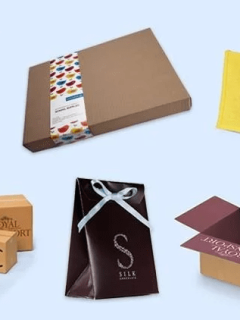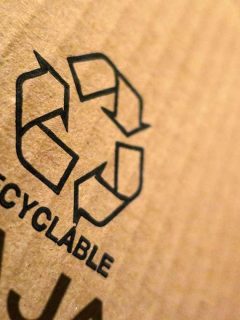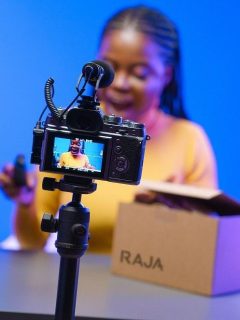Raja customers want cheap, fast and environmentally friendly packaging.
Tone Aamodt works closely with industrial customers and sees herself first and foremost as a counsellor.
The breadth of Raja’s customer base ranges from the very small to the very large. Tone Aamodt is a Key Account Manager and works primarily with large industrial customers. For example, manufacturing companies that pack goods for their own warehouse or wholesaler, or for direct despatch to customers.
– “Typically, the customers I work with have large volumes that need to be stored and transported. From us, they need everything from transport labels, boxes, bags and filling material, to wooden or plastic crates, various pallets, strapping and stretch film,” she says.
How do you work with your customers?
– “My job is to find the right packaging for the right product. So we look at the physical products, what needs to be packaged and why. Sometimes this means that the customer and I realise that the product is fine without packaging. Other times, we find that the products are not packaged well enough, so they can be damaged during transport. In most cases, customers have a lot to gain from making changes to their packaging consumption. “I work more as a counsellor than a salesperson on a day-to-day basis.
– The most important thing for me is to optimise packaging consumption, and that doesn’t always happen by selling more to the customer. But my goal is to guide them to the right consumption. It’s the best thing for everyone in the long term, and it’s all about the expertise we at Raja can provide,” says Tone.
With her broad experience, both as a former warehouse employee and with ten years’ experience at Raja, Tone can contribute to major efficiency gains, not just in consumption.
– “It’s important to look at the process from the time the product is packed until it reaches the recipient. The handling of the packaging job can be anything from fully manual to fully robotised. “The more manual labour, the more time and money you save by reviewing the workflow and reducing the time spent on each product that leaves the packing line,” she says. This can make all the difference for companies that are under pressure to control costs in order to stay competitive.
Tone distinguishes between different types of boxes that have varying degrees of automation
- Shaft: Box that is taped at the bottom and top. Manual process that can be automated by replacing the tape dispenser with an automatic taping machine.
- Automatic bottom box: Faster packing process, taped at the top only.
- Automatic bottom with adhesive strip: Fast packing process, no taping required. Quick and easy to open the parcel for the recipient.
- Ice cream machine for full automation of the packing line.
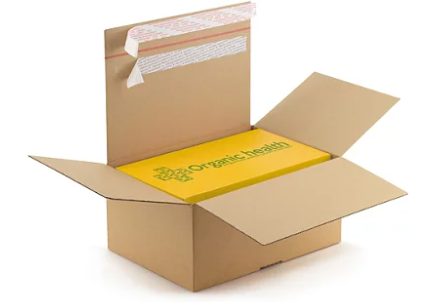
Willingness to change
Customers tend to keep doing what they’ve always done. Tone doesn’t shy away from the challenge of introducing new products and solutions.
– “It’s fair to say that the younger generation is more receptive to trying out new things and changing routines. Many people in the industry find it easy to continue with the familiar products and do what they’ve always done. It can be challenging to get warehouse staff to trust the correct taping, they tend to tape more than necessary. I can often take a taping course when I visit customers to teach them how little tape is needed,” she says, “and many customers can benefit from switching to paper tape, as we at RAJA recommend mono materials. If the customer closes the boxes with paper tape, the consumer can recycle the box in the paper waste without removing the tape, which provides a good customer experience. “To get customers to switch to paper tape, I usually give them a few rolls and agree that they test it for a few weeks. After that, they won’t go back to plastic,” Tone says with a smile.
“I’ve noticed the trend of more and more customers wanting to replace plastic packaging with paper packaging,” says Tone. – “Paper bubble envelopes are a good example; this product has proved easy to market and has led many people to stop using bubble envelopes with plastic bubbles. In addition, we have a high demand for paper machines, i.e. machines that make paper packaging and protection. Many companies have also introduced cardboard shredders, which grind up worn boxes and produce packaging filler from the cardboard. This reduces the cost of filler material.
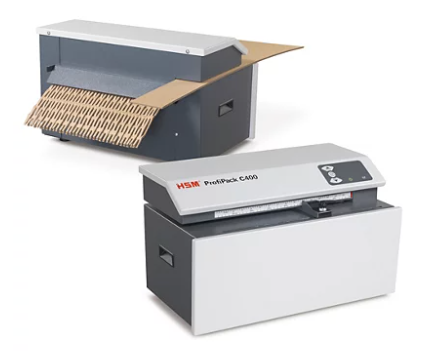
The road ahead involves changes in packaging consumption
Raja is a European company that originated in France and is now present in 19 countries. As such, they are quick to pick up on new needs and trends, and are close to the EU requirements that impact the industry and the use of packaging. What does Tone foresee for the market going forward?
– “As I’ve already mentioned, mono-materials are becoming the standard. This is in the form of many new packaging products such as paper bubble envelopes, paper tape, strapping and paper stretch film. Another change I think we’ll see is that more people will stop using transport labels. Experiments with direct printing on packaging are underway,” says Tone. She is also convinced that more people will be concerned about overpackaging, which is very common today.
Environmental ambitions
Tone also believes that we will see more active use of the environmental report customers receive from Raja based on their purchases. “Due to regulatory requirements for recycling and reuse, this is something that is being forced upon us. An important ambition for many is to reduce packaging consumption, especially plastic packaging. She herself has just submitted an assignment to the Packaging School on reducing plastic consumption by using stretch film.
– “While working on the assignment, I came to the conclusion that many companies save at least 40 per cent of their plastic consumption by using stretch film in an optimal way. This results in major environmental benefits and cost savings! Many companies have a lot to gain from acquiring the right knowledge about their packaging products.
If you want to hear more tips from a self-proclaimed packaging nerd, you can contact Tone here.











